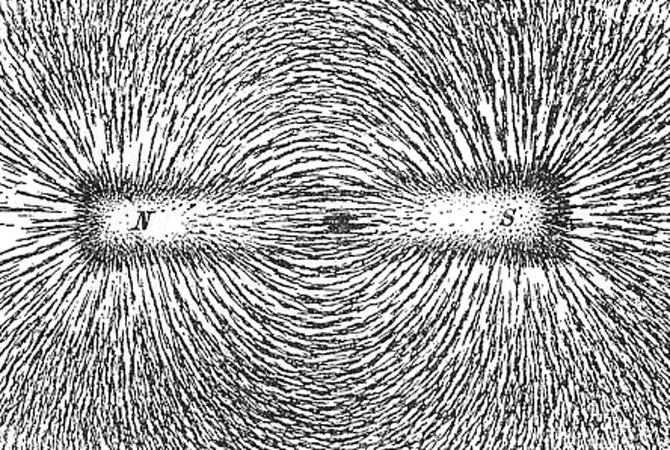
Unveiling the Cosmic Mystery: The Origins of the Universe's Magnetic Fields!
2024-11-16
Author: Rajesh
Introduction
The question of how the vast magnetic fields in our universe originated has perplexed astrophysicists for decades. Now, a groundbreaking study proposes an intriguing solution: the existence of a giant "dust battery" at the dawn of the cosmos.
The Role of Magnetic Fields
Magnetic fields permeate the universe, from Earth's own magnetic shield, which protects us from cosmic rays and aids migratory birds, to the more potent magnetic phenomena found on other celestial bodies. For instance, both Jupiter and our sun boast magnetic fields that far surpass that of Earth. Even the Milky Way galaxy hosts its own magnetic field, which, while a million times weaker than Earth's, stretches across tens of thousands of light-years. What's more, some enormous magnetic fields engender entire galaxy clusters, stretching over millions of light-years.
The Origin of Colossal Magnetic Fields
So, what gives rise to these colossal magnetic fields? Despite their relative weakness, the sheer size suggests that their origins must stem from high-energy, large-scale phenomena. Over the years, many astronomers have suggested various mechanisms, primarily focusing on a dynamo process that amplifies weaker "seed" fields into the formidable magnetic fields we observe today. However, this leads to an even more fundamental question: where do these initial weak seed fields originate?
The Groundbreaking Study
A novel paper submitted to *The Astrophysical Journal* in October may hold the answer. The researchers outline a scenario set in the era of cosmic dawn, just a few hundred million years after the Big Bang, when the universe was beginning to take shape. During this time, the first stars emerged, and upon their death, they left heavy elements scattered throughout space. These elements then coalesced to form the first dust grains.
The Dust Battery Concept
These dust grains were typically electrically charged due to interactions with radiation and friction. When the second generation of stars ignited, the intense radiation emanating from them could exert pressure on the dust grains, causing them to traverse the surrounding gas. This movement of charged dust grains effectively created a vast electrical current, reminiscent of a copper wire stretching thousands of light-years across.
Variation in Electric Current
Due to the imperfect filtering of radiation by interstellar gas, these dust grains would tend to cluster in certain regions while dispersing in others, leading to variations in electrical current. According to the laws of electromagnetism, these disparities would naturally give rise to a magnetic field.
Implications of the Findings
While the new study concludes that this primordial magnetic field would be incredibly weak—about a billionth the strength of Earth's—it is posited that this feeble field could serve as a seed for other astrophysical processes, such as mixing and dynamo amplification, ultimately giving birth to the magnetic fields we recognize today.
Conclusion
This theory not only sheds light on the fundamental formation of magnetic fields in the universe but also opens up new avenues for understanding the interactions between cosmic matter and radiation during the universe's formative years. Could this dust battery explain more than just magnetic fields? The implications of these findings may ripple through the cosmic timeline, reshaping our understanding of how the universe evolved into the complex tapestry we see today.



 Brasil (PT)
Brasil (PT)
 Canada (EN)
Canada (EN)
 Chile (ES)
Chile (ES)
 España (ES)
España (ES)
 France (FR)
France (FR)
 Hong Kong (EN)
Hong Kong (EN)
 Italia (IT)
Italia (IT)
 日本 (JA)
日本 (JA)
 Magyarország (HU)
Magyarország (HU)
 Norge (NO)
Norge (NO)
 Polska (PL)
Polska (PL)
 Schweiz (DE)
Schweiz (DE)
 Singapore (EN)
Singapore (EN)
 Sverige (SV)
Sverige (SV)
 Suomi (FI)
Suomi (FI)
 Türkiye (TR)
Türkiye (TR)